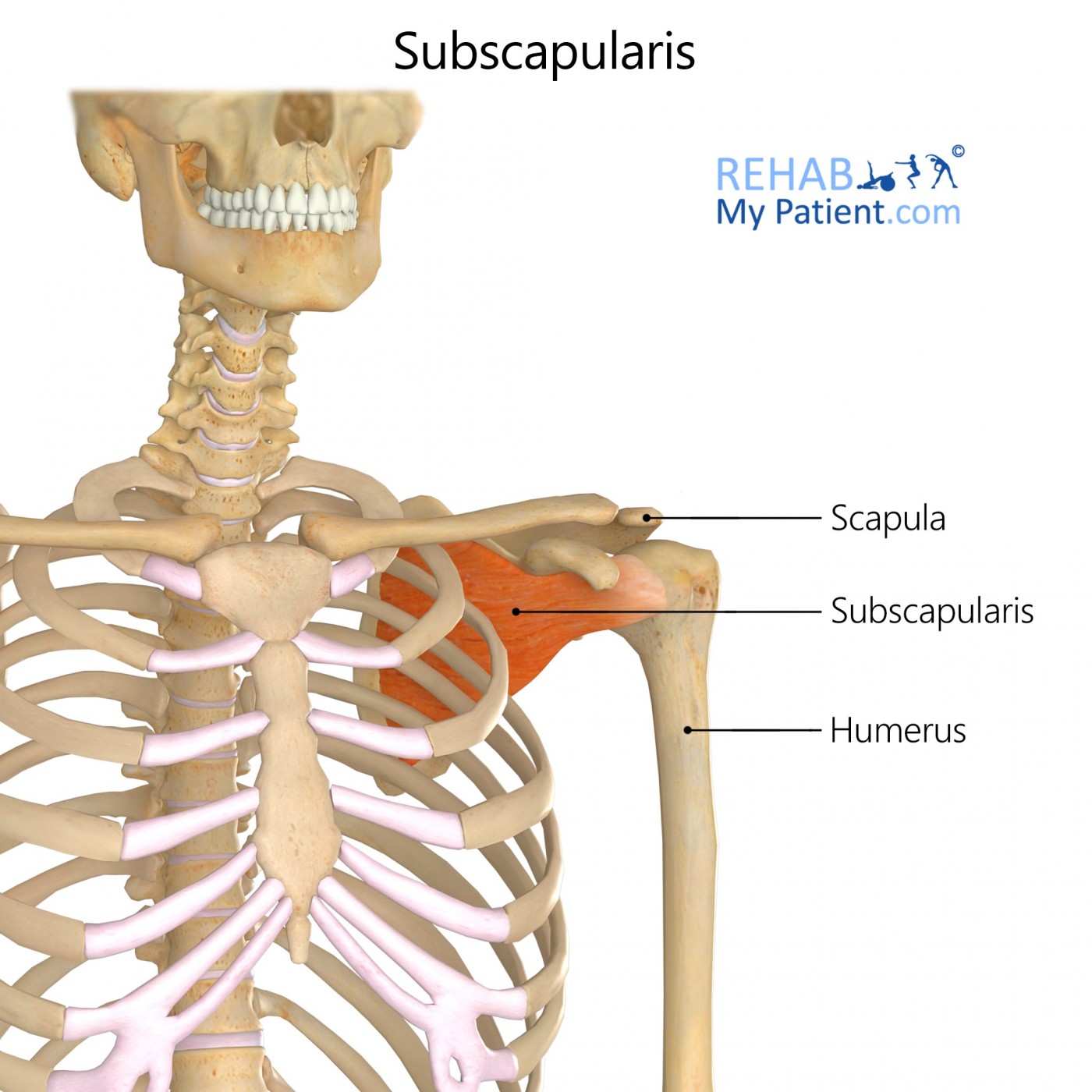Subscapularis
Opublikowano dnia 29th Jul 2020 / Opublikowano w: Ramię

General information
The Subscapularis muscle is a larger, triangular muscle that helps to fill the subscapular fossa. It is inserted into the lesser tubercle humerus as well as the front part of the capsule for the shoulder joint.
Literal meaning
Under a digger.
Interesting information
This muscle helps the joints in the shoulder move and create powerful internal rotations, such as when swimming or hitting a tennis ball on the courts. Injuries to the Subscapularis are rare. Most of the time, the rotator cuff injuries involve either the subscapularis tendon at the top of the shoulder or the infraspinatus tendon on the back of the shoulder. The injuries often occur as the direct result of a traumatic event, such as a fall. Normally, these injuries affect those who are younger than those who come in with a tear in their supraspinatus tendon. Tendon tears can take place following a surgical procedure, such as that of a total shoulder replacement where the subscapularis tendon is removed and repaired as part of the procedure.
Origin
Surface from the subscapular fossa as well as the tendinous intermuscular septa from the subscapular fossa.
Insertion
Lesser tubercle from the humerus as well as the articular capsule from the shoulder joint.
Function
Medial rotation of the humerus.
Flexion of the abducted humerus.
Aids the pectoralis major in flexion of the abducted humerus.
Stabilizes the shoulder joint.
Active during movements of the joint to help stabilize the head of the humerus of the glenoid cavity.
Correlates with the infraspinatus to keep the humeral head down during the initial abduction for the humerus.
Nerve supply
Upper and lower subscapular verve C5-C6.
Blood supply
Suprascapular artery’s small muscular branches.
Axillary artery.
Subscapular artery.
Dorsal scapular artery.

Relevant research
Arthroscopic management of the subscapularis tendon lesions were reported far more recently than those of the infra- and supra-spinatus tendons. Where there are extensive tears, this can be a technical problem that might require an extra-articular approach. So far, the few reported results have been encouraging. In this study, surgical techniques were adapted to the individual types of tears based on the subscapularis lesion classifications. Between 2006-2008, 74 patients underwent operations for an extensive tear in the subscapularis. 23 of those individuals were assessed for at least two years using an array of different tests. These results showed improved shoulder function, from 58% to 86%. They recommend for severe tears to customise the surgery, by visualising the subscapularis tendon from above along its main axis.
Lafosse L, Lanz U, Saintmard B, Campens C. Arthroscopic repair of subscapularis tear: Surgical technique and results. Orthop Traumatol Surg Res. 2010;96(8 Suppl):S99?S108. doi:10.1016/j.otsr.2010.09.009
Subscapularis exercises
Ball lat stretch
Kneel onto both knees in front of a stability ball. Put the hands on top of the ball using a karate chop position. Push the arms forward to move the ball. As the ball is pushed forward, sit onto the heels and lower the legs so the arms and torso are parallel to the ground. Hold the stretch for five deep breaths. Return to the starting position. Perform the stretch for two repetitions.
Zapisać się
Zarejestruj się już teraz, aby skorzystać z bezpłatnego okresu próbnego!
Zacznij korzystać z Rehab My Patient już dziś i zrewolucjonizuj proces przepisywania ćwiczeń, aby zapewnić sobie skuteczną rehabilitację.
Rozpocznij 14-dniowy bezpłatny okres próbny